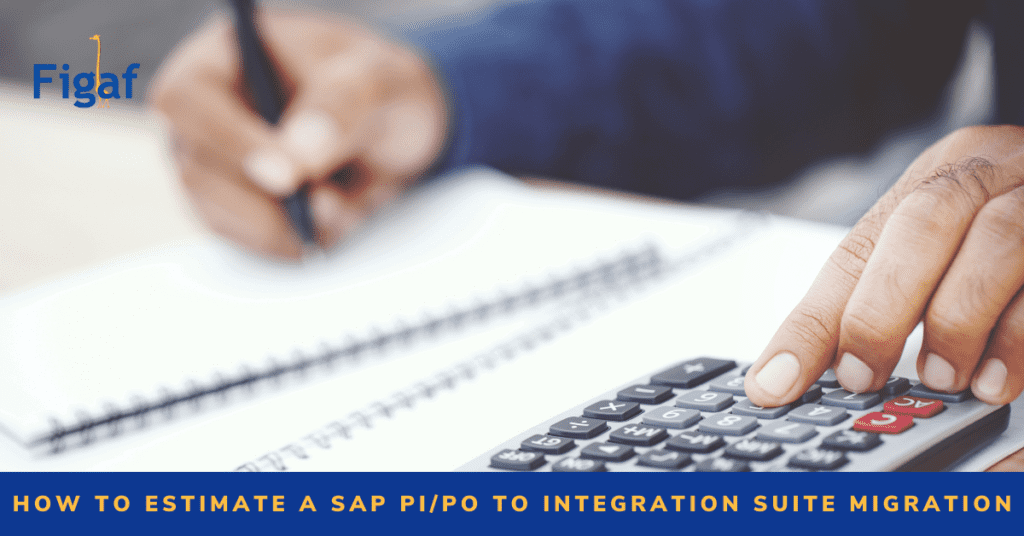You will probably be tasked with coming up with an estimate on how much is this migration from SAP PI/PO to Integration Suite (CPI) is going to cost you.
Creating estimates is always tricky. You will always be wrong. How did your last estimate work well. There are always many unexpected things you need to consider, and the same with migration.
Even if you have performed a lot of migrations, all cases are different and you need to consider the estimate for that client, because of some of the ideas below.
As SAP Customer you want the migration to be cheap with low risk and produce a result that will be easy to maintain after the migration. And since you will use that integration for a long time, the quality and ease of maintenance are more critical than saving 100,000 EUR on the migration.
I have created a video about what you need to consider for your migration assessment. You cannot get something automated you need to spend time on figuring out what the values should be.
Assessment report
Now you have an understanding about the target scenario and some of the things to add to your estimate. It will not be simple, otherwise, everybody could do it.
As a part of the Figaf Tool we have the assessment part of the tool. This will give you an in-depth understanding of your landscape in just 30 minutes. Just install the device and get started. You can see how you can create your own report here.
The idea is for you to get some idea about the scope of the area. You will essential need to figure out
- How many sender/receiver combinations do you need to migrate test and transport?
- Number of systems involved
- Number of interfaces that can easily be migrated, and how many that you probably need to perform more work with
- What interfaces do not match your migration strategy regarding adapters or ISA-M considerations?
Then it is “just” to multiply the number of interfaces pr type, with the estimated time, and you got some idea of the estimate. This will require effort and you will need to adjust the estimate.
SAP also has its migration assessment tool coming out here in Jan 2023. It may give you the same numbers. It even comes with time estimates for the migration. But it would depend a lot of some of the other factors mentioned that is also is covered here.
I would in both cases, try both tools and use the parts that make most sense for you.
Considerations for your migration
Depending on the customer and setup there are a lot of differences in the step and requirements for time spent.
There are a lot of steps to include in an estimate.
- Project management
- Migration of the content
- Testing
- Documentation
- Transport
- Go-live
It does matter with the team size and experience.
Migration
Before you start migrating content you need to understand how you will work with the migrated integration afterward. You will be using it for a long time so you better ensure you know how to operate it.
You need to have the conversation first or you will trust the consultancy to deliver the value most relevant for you.
Once you have a clear idea about the result it is just about getting started with the migration. Probably 70% can be automatically migrated, and the rest you are probably better of by redesigning to the new platform.
Spend some time testing the different ways of experimenting with migrations tool including Figaf and SAPs upcoming tool to see what works better for you and what is the time savings. You will probably see that Figaf saves you a lot of time, saving you a lot of time of the migration maybe only for some types of integration.
Testing
Gartner’s estimates on migration project is that 60% of the effort will go into testing. Figaf Tool simplifies testing and you can get our migration edition for free. With our automated testing, you will be able to reduce the time required for testing by business users.
If you just outsource the migration project, you need to consider how much time internally is going to be spent on verifying the migrated result. Your business experts need to devote some time to help with the testing and verify your process will work. Testing also adds extra time for coordination on the project team.
Management and go-live
Once you have migrated and tested an interface, the work is not done. You need to spend time on documenting, transporting, and configuring it across the landscape. This is something that can take quite a bit of time for most organizations to make sure everything is configured correctly.
As a part of the go-live you will need to communicate with the partners involved and let them reconfigure their interfaces. The complexity increases if you coordinate outside the organization and with security setup.
Conclusion
The migration is not just a simple project that you can just migrate.
You will need to be using the migrated integration for a long time, so please ensure it fits your requirement for an integration setup. I sure hope that the content here gives you a good way to get started with the migration.

